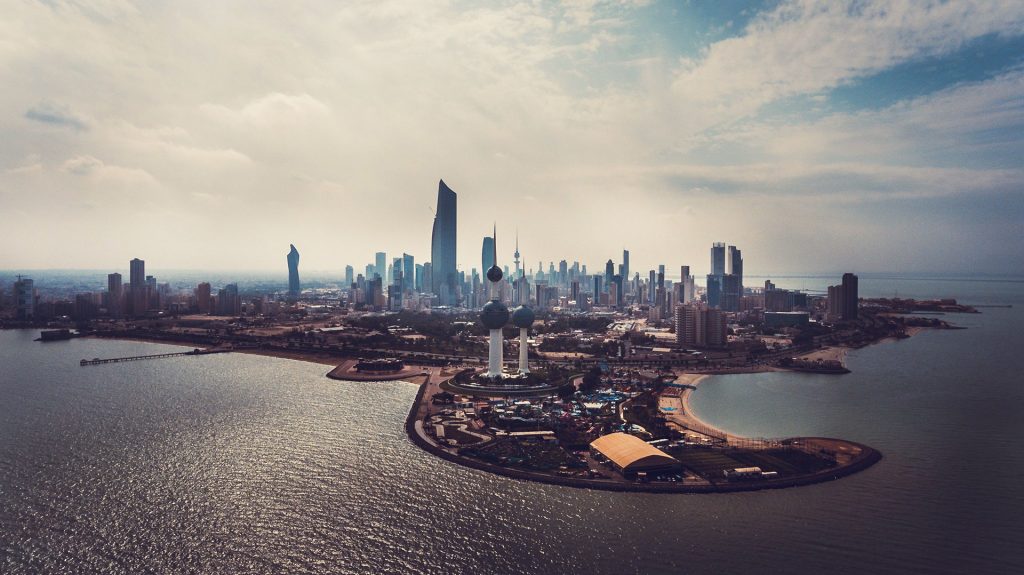Kuwait is a relatively small country with a population of about 4.25 million, but it has rich oil reserves and one of the highest per capita GDPs (around $25,000) in the Middle East. While Saudi Arabia’s Public Investment Fund (PIF) has garnered plenty of global press in recent years for its funding of megaprojects like NEOM and Qiddiya, Kuwait’s sovereign wealth fund, the Kuwait Investment Authority, trumps it with about $800 billion in assets under management. It is also the Middle East’s oldest sovereign wealth fund.
Similar to Saudi Arabia’s ambitious efforts to transform its economy and reputation under Vision 2035, Kuwait has initiated multiple megaprojects designed to stimulate economic growth and enhance international visibility. In July 2023, the government announced a four-year infrastructure plan to develop more than 100 major projects spanning various industries.
Below is a look at the progress of some of Kuwait’s most notable developments.
Kuwait International Airport Terminal 2
Air travel passenger traffic into Kuwait tripled from 2004 to 2019, rising from 5 million to 15 million per year. In response to this growth, the country began building a new state-of-the-art terminal at Kuwait International Airport (KIA) in 2017. The new terminal, with design plans for four above-ground levels, 120 check-in desks, and a metro line connecting it to Kuwait City Center, was originally expected to be completed by 2022, but experienced delays due to the COVID-19 pandemic and is now projected to be finished by 2025. A Turkish contractor won the tender to build the $4.3 billion terminal, while TAV Airport Holdings, in June 2024, announced that it had bid on the terminal’s operation and maintenance services tender.
In addition to the aforementioned features, KIA Terminal 2 will feature a baggage handling system, including integrated sorting, storage, and screening capabilities, that is able to process more than 2,900 bags per hour. It will have sustainable features such as PV rooftop panels and thermal mass and is in line to be the world’s first Leadership in Energy and Environmental Design (LEED) gold certified airport terminal. Once completed, the terminal will boost KIA passenger capacity to 25 million.
Silk City
Silk City (Madinat Al Hareer in Arabic) is a planned megacity waterfront development with an unknown completion date, although early estimates suggest sometime around 2035. It is expected to be the most expensive project in Kuwait’s history. The Sheikh Jaber Al-Ahmad Al-Sabah Causeway, the first phase of the project which opened in 2019, cost $3 billion and the entire city is expected to cost more than $130 billion. China is helping to fund the project via its Belt and Road initiative, launched in 2013 with the goal of linking East Asia and Europe and expanding the country’s political and economic influence.
The 250-square-kilometer city, built on mainland Kuwait in Subiya, is also expected to create about 450,000 jobs and will include infrastructure such as an Olympic stadium, airport, nature reserve area, a power plant, and port. The highlight of the project, however, will be the 1,001-meter tall Burj Mubarak Al Kabeer which, when completed, will surpass Dubai’s Burj Khalifa as the world’s tallest skyscraper. The 234-floor building will feature seven vertical villages with offices, hotels, and residences, as well as wind-resistant design features, including adjustable vertical ailerons and three interlocked towers twisting at 45-degree angles.
Railway Projects
A three-phase railway project, expected to link Kuwait to Saudi Arabia, is expected to be complete by 2028. The 650-kilometer railway, once finished, is expected to decrease travel time between the Gulf Cooperation Council (GCC) nations to about two hours and foster an increase in bilateral trade. The railway will begin in Al Shadadiya and run through the Saudi capital of Riyadh. The Saudi Public Transport Authority and Saudi Arabia Railways, in 2023, appointed French company Systra to perform a feasibility study for the high-speed railway.
Kuwait and Saudi Arabia, along with the four other GCC nations, are also working on a proposed $250 billion GCC Railway that will connect all six member states. The 2,177-kilometer network was originally slated to be complete by 2025, but construction has yet to begin due to financing and logistical issues. Finally, Kuwait is working on creating its first national railway network and, in 2023, allocated $3.25 billion for the first phase of the project.
Al Hamad Commercial Center
Expected to be completed by the end of 2024, the Al Hamad Commercial Center in Kuwait City is a mixed-use project with retail and office components. It will feature an eight-story tower built on a three-level retail building and a 32-story office tower with a combined built-up area of more than 49,000 square meters. Combined Group Contracting Co. is building the commercial center, which will also have two basement floors for parking and MEP services, as well as an outside landscaped area of more than 6,000 square meters.
Kuwait is also building another major retail project in Kuwait City known as the Khaitan Shopping Mall.

